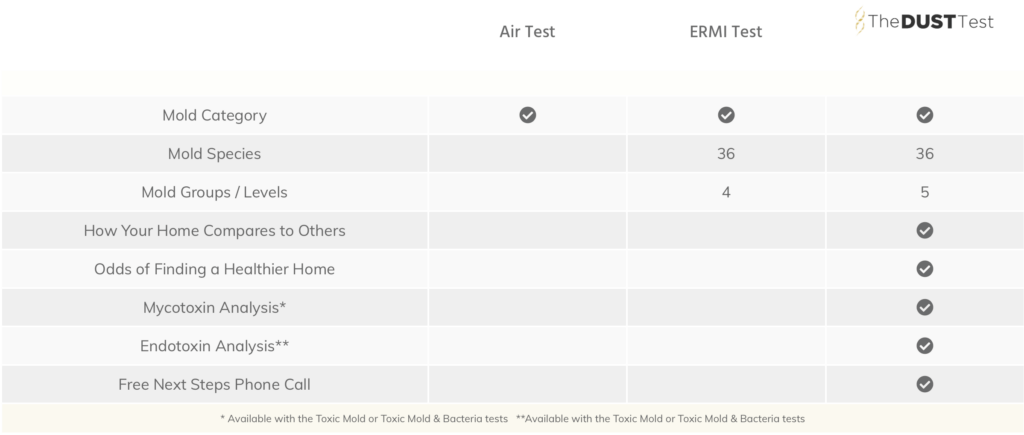Dr. Jill’s Favorite Home Test

While Dr. Jill recommends hiring a qualified mold inspector to check your living space, she knows that sometimes that’s simply not feasible. Sometimes, you need a “first step” check.
While many people rely on an ERMI for this first check, in Dr. Jill’s experience, this misses one of the most important bits of evidence – the toxins.
Why an ERMI Isn’t Enough
An ERMI will test for DNA evidence of mold spores and spore fragments. Mold spores and fragments can be found if the spores are exposed to the indoor air or accessible for testing. Spores and fragments contribute to allergic symptoms, such as hay fever, sinusitis, histamine and mast cell issues, and asthma. However, mold-related illness can occur additionally from the toxins in a damp, humid, or water-damaged building.
Not every building’s mold issue can be found by an ERMI if the mold colony is invisible. If the mold is covered over or hiding behind building materials, or worse, thriving in the HVAC system, the spores are trapped, but the toxins can easily move into the indoor air. In those cases, an ERMI alone can be deceiving.
We need to know the toxin load of the building.
Toxins Make the Difference
Mold mycotoxins are responsible for the other 70-80% of the symptoms seen with mold-related illness. If the water issue is from a “grey water” intrusion, the chances of added Endotoxins increases exponentially. Toxins from mold and bacteria are nanoparticle-sized, moving swiftly through building materials into the indoor air with normal daily home activities that create changes in air pressure, such as opening a door quickly. The toxins may be the only thing making a person sick.
It’s important to test for mold spores, spore fragments, mycotoxins, and endotoxins.
The Dust Test has all of these covered in one complete test.

For some reason, the indoor environmental professional industry has been slow to adopt mycotoxin and endotoxin testing. Dr. Jill has countless examples where families were still sick from their homes, and where mycotoxin and endotoxin analyses were the only things that detected the problem.
Taken with an ERMI, the toxin tests round out the picture of the health of your living space.
Phone Support
One of the best features offered with The Dust Test is the no cost “next steps” real-live person phone support call. With this support, you don’t have to rely on your doctor or an inspector who’s not well versed in mold to guide you. The folks at The Dust Test specialize in water-damaged buildings, and have collated decades of experience with hard data to arrive at their recommendations.
Your doctor is a body expert, not a building expert. Trust the building experts to help you figure out your next steps.
Sterile cloth
Did you know that many of the ERMI tests out there don’t require a sterile cloth? If you collect a dust sample on any old cloth and it detects mold spores or fragments, how do you know that they came from your home or from the cloth? You don’t!
A sterile cloth collection ensures that what they detect at The Dust Test actually came from your home.
The Problem with ERMI Scores
The problem with the ERMI score is that it was never designed to diagnose a mold problem. The ERMI scoring system was created as part of a national survey of homes by the EPA. The algorithm was devised as a means for data collection and statistical analysis for their survey study – NOT to assess a single living space.
The ERMI score was never intended to be used as a means to diagnose any single living space. The score can be very misleading, and has lead Dr. Jill’s patients into false assumptions about the health of their homes.
The Dust Test uses the same DNA PCR detection of mold spores and fragments, and combines these findings with decades of research, to produce a test result that gives you a clear picture of the health of your home.
It’s clear why The Dust Test is Dr. Jill’s favorite home test.

